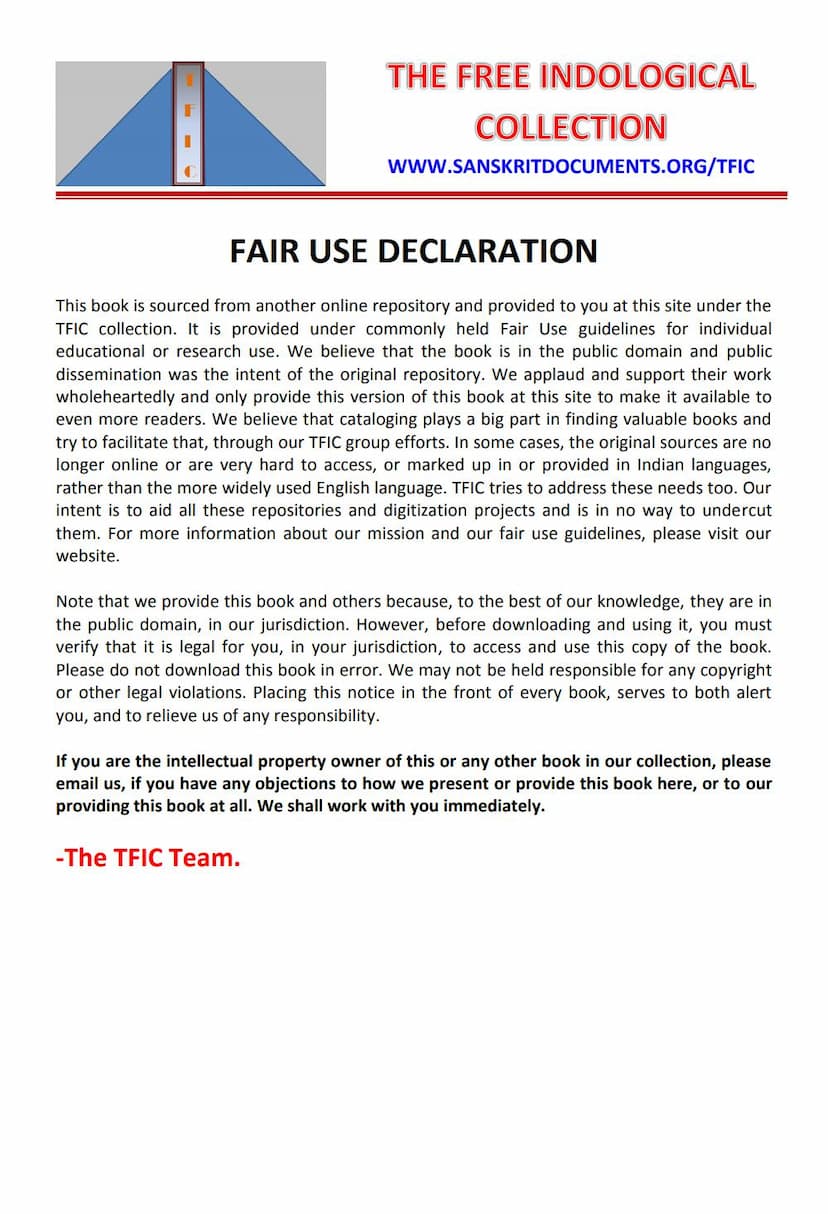Pahuda Doha Chayanika
Added to library: September 2, 2025

Summary
This document is an introduction to "Pahuda Doha Chayanika" (A Selection of Pahuda Doha), a collection of 92 verses from Muni Ram Singh's "Pahuda Doha". The book is published by Apbhramsa Sahitya Academy and compiled and analyzed by Dr. Kamalchand Sogani.
Here's a breakdown of the content:
Core Philosophy: The introductory sections (Prakashiya and Prastavana) emphasize the Jain philosophical principles of:
- Dualism: The world consists of two fundamental elements: conscious (soul/jiva) and inert (matter).
- Attachment and Suffering: Suffering arises from the soul's attachment to and misidentification with inert objects and external relationships ("para").
- True Happiness: Lasting happiness is found in self-knowledge, detachment from worldly pleasures, and inner contemplation.
- Renunciation over Enjoyment: The importance of renunciation over consumption and self-experience over rituals is highlighted.
About the Original Work, "Pahuda Doha":
- Author: Muni Ram Singh, a poet from Rajasthan, likely from the 10th century CE.
- Language: Composed in Apabhramsa, a literary Prakrit.
- Content: A collection of 222 verses offering a "gift of verses" (Pahuda Doha) to the common people.
- Spiritual Focus: Muni Ram Singh is a significant mystical poet emphasizing self-experience and denouncing external rituals, superstitions, and narrow sectarianism. He advocates for self-purification by controlling desires (rag-dwesh-moh) and recognizing the distinction between the self and the non-self.
About the "Pahuda Doha Chayanika":
- Purpose: To present 92 selected, simple, and universally useful verses from the original "Pahuda Doha."
- Editor/Analyst: Dr. Kamalchand Sogani, a retired Professor of Philosophy.
- Unique Approach: Dr. Sogani's methodology involves presenting the original Apabhramsa verse, followed by its grammatical analysis, and then a Hindi translation with word meanings. This approach aims to help readers understand Apabhramsa grammar and the original poet's originality.
- Structure of the Collection: Each selected verse includes:
- The original Apabhramsa verse.
- A grammatical analysis of the verse and its words.
- A Hindi translation of the verse.
- A word-meaning glossary.
- Goal of the Analysis: To facilitate learning Apabhramsa grammar and vocabulary, making the language more accessible.
Key Themes and Teachings from the Verses: The introduction and the verses themselves cover several vital spiritual and ethical themes:
- The Nature of the Self: The soul is distinct from the body, eternal, and blissful. External attributes (body, wealth, relationships) are impermanent and not the true self.
- The Illusory Nature of Worldly Pleasures: Sensory pleasures are temporary and lead to suffering. True and lasting happiness comes from detachment and inner peace.
- The Importance of Self-Knowledge: Understanding the true nature of the soul is paramount for liberation. External knowledge or rituals without self-realization are futile.
- Detachment from Possessions: Home, servants, body, and desired objects are not truly one's own and are products of karma.
- Practicing Restraint: Controlling the senses (indriya-sanyam) is crucial for spiritual progress.
- The Power of Meditation: Deep meditation leads to equanimity and detachment from joy and sorrow.
- Abandoning Bad Company: Associating with virtuous individuals is essential, while avoiding those engaged in bad conduct.
- Ethical Conduct: Practicing non-violence (ahimsa) and not causing harm (anyay) are fundamental.
- The Futility of External Rituals: Worship without inner understanding and purity of mind is ineffective.
- The Path to Liberation: The verses guide the reader towards inner peace by renouncing attachments, understanding the self, practicing restraint, and cultivating equanimity.
Publication Details:
- Publisher: Apbhramsa Sahitya Academy, Jainvidya Sansthan, Digambar Jain Atishay Kshetra Shri Mahavirji.
- First Edition: 1991.
- Price: Rs. 13.00.
- Printer: Mainland Printing Press, Jaipur.
The book is dedicated to the memory of Dr. A. N. Upadhye and Shri Hiralaal Tirth. The "Fair Use Declaration" at the beginning indicates the book is made available for educational and research purposes under fair use guidelines, sourced from another repository and believed to be in the public domain.